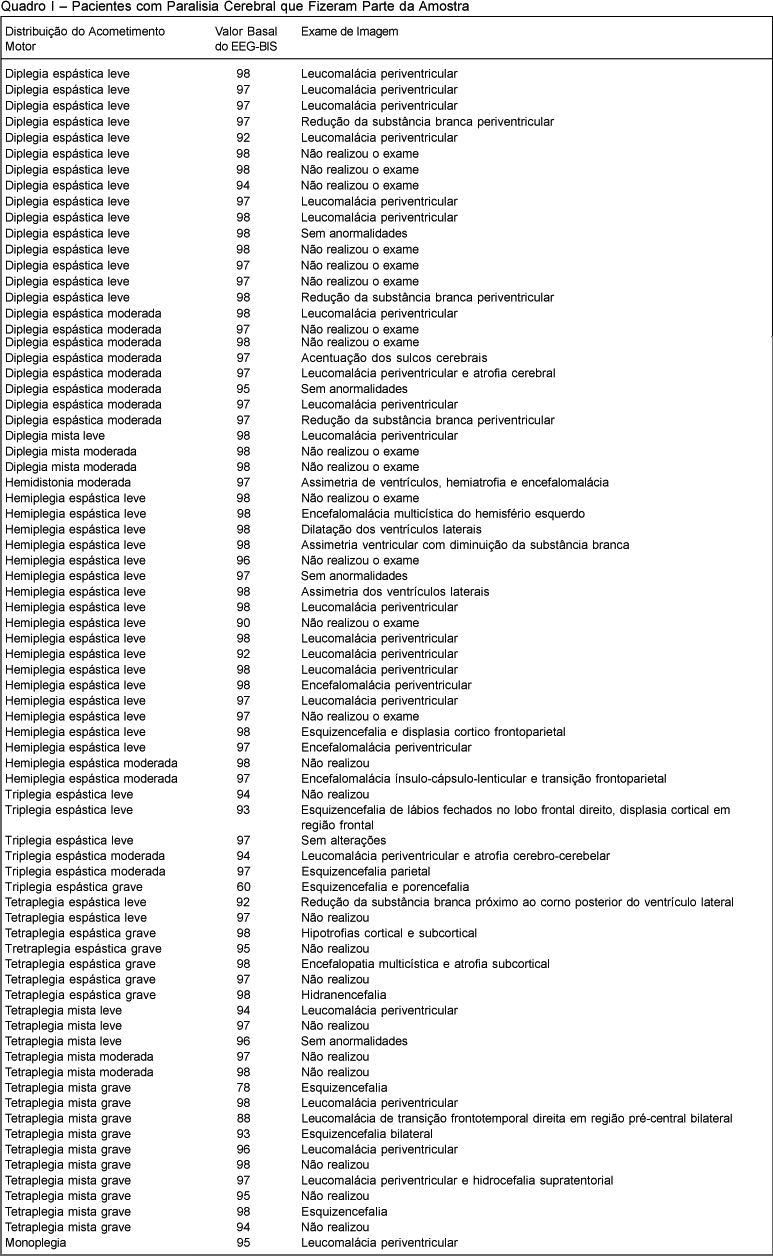BACKGROUND AND OBJECTIVES: The EEG-BIS was created after studies in healthy adult subjects, and studies in children were first published in 1998. Cerebral palsy (CP) is secondary to a static lesion of the developing brain. The need to perform exams and surgical procedures to correct deformities, under anesthesia or sedation, is common in these patients. The need for monitoring of the hypnotic state in anesthetized patients has increased; patients with cerebral palsy can be included in this group of patients. The objective of this study was to evaluate the efficacy of the awake EEG-BIS in patients with cerebral palsy (CP) by comparing it with patients without neurological disorders (without CP). METHODS: Two groups of patients were evaluated: one composed of patients with the diagnosis of cerebral palsy, and the other with subjects without central nervous system (CNS) disorders. The day before the surgery, hospitalized patients were connected to the EEG-BIS monitor and were asked to close their eyes. The values on the monitor were recorded at 10-minute intervals on a standard form, and the mean value for each patient was calculated. RESULTS: One hundred and eighty-eight patients of both genders, mean age of 10.07 ± 2.9 (CP) and 10.21 ± 3.1 (without CP), were evaluated. The basal EEG-BIS of the PC group was 95.83 ± 5.142 and in the non-CP group was 96.56 ± 1.941, which did not demonstrate a statistically significant difference. CONCLUSIONS: The signals of the EEG are captured normally and the values of the awake EEG-BIS of CP patients are similar to that of non-CP patients.
DISEASES; MONITORIZATION




